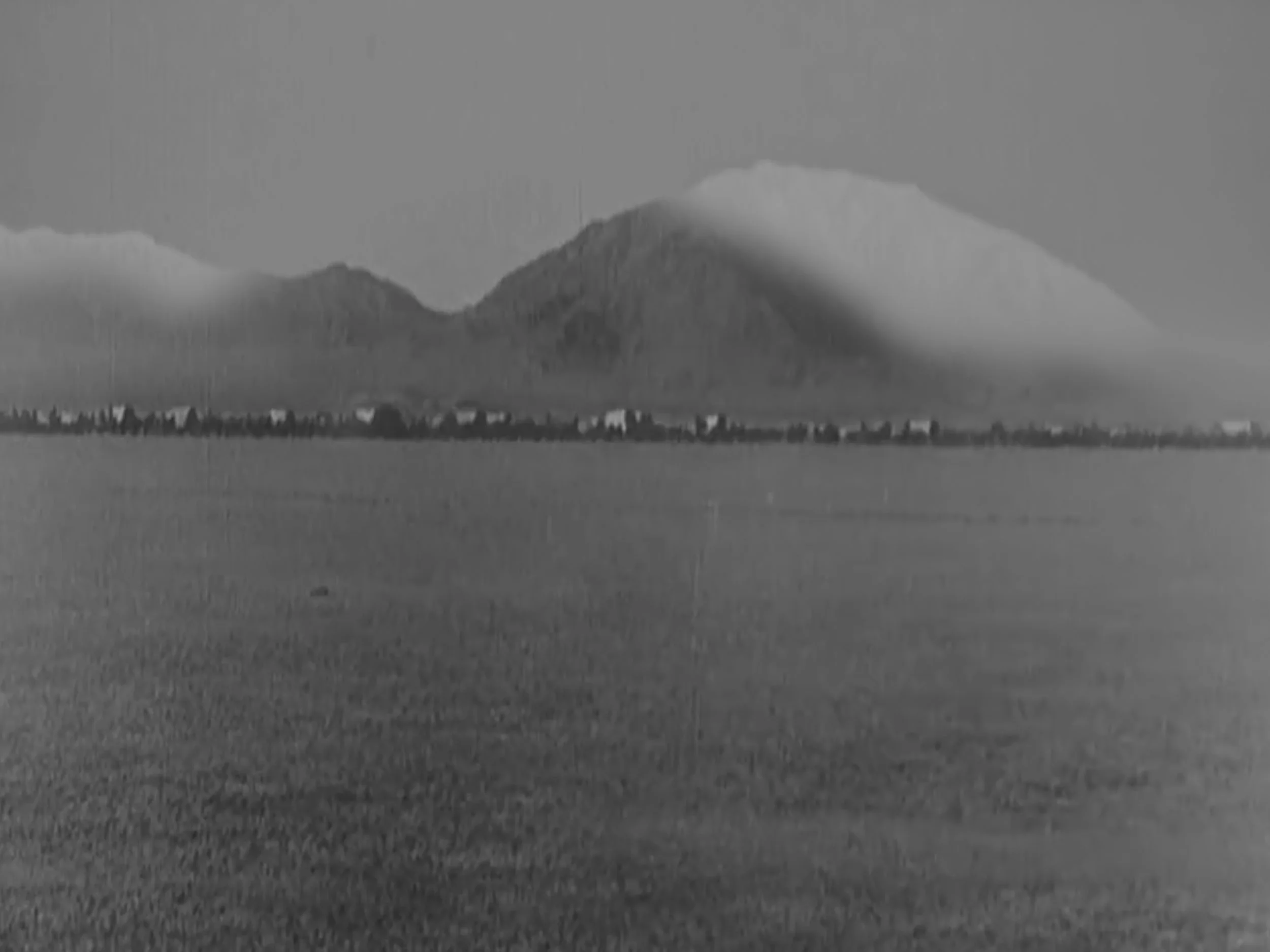I Carry the Universe With Me 我將宇宙隨身攜帶
2024 / 21:20 / B/W & Color / Sound / 1.33 / Original format: 16mm
In a future dominated by technological images, how will human culture be rewritten? Will history be reset? Is the land beneath my feet still habitable? Is the sky the same sky? I was curious about how artificial intelligence described the images I took of the world. Here a cow is seen as a horse, and a boat is seen as a vase. Realities and hyperrealities are woven together as if this is the prototype of the myth of modern life.
The work was inspired by the naturalist poet Alberto Caeiro. Slowly look at a flower; slowly listen to the flow of a river. Open the window, and the world is right before you, no matter what we call it. If you move, the world moves with you.
在科技影像主導的未來,人類文化將如何改寫?歷史會被重置嗎?我腳下的土地還適合居住嗎?天空是原來的天空嗎?我很好奇人工智慧如何識別我拍攝的世界圖像。這裡把牛看成馬,那裡把船看成花瓶。現實和超現實交織在一起,彷彿這便是現代生活神話的原型。
這部作品的靈感來自自然主義詩人阿爾貝托・卡埃羅。慢慢地看一朵花;慢慢聆聽河流的流動。打開窗戶,世界就在你面前,不管我們如何稱呼它。你若動,世界便隨你動。
Artist Statement:
Part of this work uses an old film shot a hundred years ago in Newhall, California, to parallel images taken in the same area today. People once immigrated to Newhall for gold mining, and today, the William S. Hart Museum of the Cowboy West is there. History does move along a timeline, but the footprints under our feet have faded. Virtual space replaces traditional expeditions. In the computer-derived world, one hundred years is just a number.
The poet Alberto Caeiro would say that instead of philosophizing too much, let's look at the world objectively. When I open the window, the stones are here in the sun and the river flows there. This is nature. However, in a flat world, where is nature? There are many shades of blue in the sky, and the color space changes depending on the interface used.
More than two thousand years ago, the Zhuangzi once said that heaven and earth are “one finger”, and all things are “one horse”. Heaven, earth, and horses are people’s views and names for things, not the things themselves. In the film, I used artificial intelligence to generate descriptions based on image analysis programs. They are false references, not the images themselves. Zhuang Zhou dreamed of a butterfly, whether it was Zhuang Zhou who dreamed that he had become a butterfly, or whether a butterfly had dreamed that it had become Zhuang Zhou. Today, two thousand years later, we may have to ask whether the real me lives in the virtual world, or the virtual me lives in the real world.
I wanted to take the entire universe with me, and I could.
Old and enormous are the stars.
Old and small is the heart, and it
Holds more than all the stars, being,
Without space, greater than the vast expanse.
(From Pessoa’s Ruba’iyat, In the Manner of Omar Khayyam)
創作理念:
本片的一部分使用了一百年前在加州紐霍爾(Newhall)拍攝的老電影,與今天在同地點拍攝的影像互文。人們曾經為了開採金礦而移民到紐霍爾,如今西部牛仔威廉・S・哈特(William S. Hart)博物館就在那裡。歷史確實在時間軸中推移,只不過腳下足跡已褪色,虛擬空間取代了傳統的遠征,而在電腦衍生的世界中,一百年不過是一個數字。
詩人阿爾貝托・卡埃羅(Alberto Caeiro)會說,不要太過哲學化,讓我們客觀地觀察世界吧。當我打開窗戶時,石頭在日光下曬著,河流在那裡流淌,這就是大自然。然而在平板世界中,自然在哪裡?天空的藍有許多種,色彩空間會根據使用的螢幕而變化。
兩千多年前,莊子曾說過,天地一指,萬物一馬。天、地、馬,是人對事物的看法和名稱,並非事物本身。在電影中我使用人工智慧依照圖像解析程式所產生出來的描述,皆是假名,並不是圖像本身。莊周夢蝶,不知竟是蝴蝶夢為莊周,或是莊周夢為蝴蝶。兩千年後的今天,我們或許要問,是現實的我活在虛擬世界,還是虛擬的我活在現實世界。
我想帶著整個宇宙出走,而我可以。
古老而巨大是星星
古老而渺小是心,它
擁有比所有星星更多,存在,
無空間,比之浩瀚更加遼闊。
(來自佩索阿的《Ruba’iyat》,以奧馬爾・海亞姆(Omar Khayyam)的方式)
Installation/performance at LA Phil, Walt Disney Concert Hall (part of Getty Museum’s PST ART: Art & Science Collide) (Los Angeles, USA), 2024
“It is a film of such readily apparent beauty that at first glance, a viewer might not notice how densely structured it is. Combining grainy black-and-white images with fragments of poetic text (in both English and Chinese), Liu also uses staccato editing and shadowy superimpositions to break the visual track apart into components of motion and stillness. The text is in part about the historical distance between the viewer and the speaker — a thousand years to be exact — and so I Carry the Universe gives the impression of several signification systems in collision, with a distinct time lag that forestalls any easy synthesis. This is a film to get lost in, one that courts confusion but never frustrates.”
— By Michael Sicinski, In Review Online: Crossroads Film Festival 2025: We Become Traces in History, Sept. 01. 2025
“Die US-Künstlerin Cherlyn Hsing-Hsin Liu verbindet in ihren Arbeiten experimentelle Literatur mit verschiedenen Medien. In ihrem Film „I Carry the Universe with Me“, der als Teil der „Selection #2: Talking of A Land“ am Freitag (23. 5.) Weltpremiere feiert, gliedern Texteinblendungen Footage aus der Vergangenheit und Gegenwart von Kalifornien. Die Texte stammen teilweise von einer Software zur Bilderkennung und zeugen von einem erfreulich dadaistischen Verhältnis zur Realität.”
— By Fabian Tietke, The Fracto Festival: Blow through viewing expectations, 21.5.2025
“There’s incredible depth conveyed in the images as they overlap, compound, blur, and shift. The visual complexity you accomplish is matched and pushed even further in your writing through the use of poetry as a catalyst for the internalization of time and space as forces that are subject to our impact even as they remain wholly unfathomable and outside of our control.”
— By the True/False Film Fest programming team




